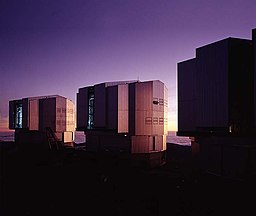AMHRA
Analysis and Modeling at High Angular Resolution
Principal investigator: Armando Domiciano
AMHRA develops and provides online astrophysical models and data analysis tools dedicated to the scientific exploitation of high angular and high spectral facilities such as ESO-VLTI. It is aimed at users seeking to prepare, model, and analyze interferometric observations, notably those from the second generation of VLTI instruments, GRAVITY and MATISSE, with unprecedented capabilities on high spectral and spatial resolution.

© ESO
AMHRA provides:
- Polychromatic images from astrophysical models with fast computation time (real time models)
- Polychromatic images from a precalculated grid of astrophysical models
- Spectro-interferometric observables from model images (OIFits modeler)
- Analysis and model-fitting tools for spectro-interferometry
This service was initially published under the name “Analyse et Modélisation en Haute Résolution Angulaire”.
AMHRA is a working group of MOIO/JMMC and is supported by the Observatoire de la Côte d'Azur (OCA) through the DOMINO expertise center. MOIO is a French AA-ANO5 SNO supported by CNRS-INSU.
Real time astrophysical models

Disk and stellar continuum – DISCO
Model of the continuum emission from a star surrounded by a gaseous circumstellar disk (free-free and bound-free), with partially ionized and geometrically thin disk with a physical structure given by the viscous Keplerian decretion disk model. DISCO is well suited to model Be stars.

Analytical Limb-darkening Elliptical or Spherical – ALDES
ALDES provides intensity maps (images) or 1d intensity profiles for spherical or elliptical stars showing the limb darkening (LD) effect. Different LD laws are offered: uniform disk, linear, power law, quadratic, square root, logarithmic and four-parameter.
Precalculated grids of astrophysical models

Supergiant B[e] with HDUST
Grid of models for B[e] supergiant stars computed with the 3d Monte Carlo radiative transfer code HDUST. The non-spherical circumstellar envelope (CSE), composed of gas (hydrogen) and dust (silicate), is modelled considering a bimodal outflow description (two-component wind).








